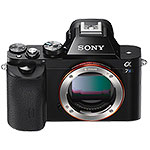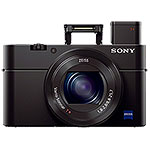Nikon D7000

- best-in-class DSLR
- somewhat bulky
- 16.2MP DX sensor
- 24.3oz (body only)
Nikon's D7000 digital SLR camera is a formidable photographic tool, handling with ease nearly every professional need imaginable.
Some have called the D7000 Nikon's finest DSLR ever. It is hard to argue with that claim. Though it was not created as a flagship camera (in fact, the D7000 was conceived as a Prosumer or bridge model), the D7000 has proved itself so superior that, quite simply, there is nothing else currently available in the DX-sensor universe that compares.
You might think that would mean I always shoot with my D7000. In fact, the D7000, of all my cameras, is perhaps the least likely to come along for the ride. But first, let's talk image quality. The D7000 uses a next-generation DX sensor (which crops the field of view compared to a 35mm sensor) and an advanced processor which deliver image quality that dramatically exceeds expectations.
At 16.2 megapixels, the sensor's pixel density is extreme. Previous wisdom expected that such sensors would never deliver superior high ISO performance, and that per-pixel sharpness would never match a full-frame sensor camera. Surprise: the D7000's high ISO performance is stunning, and its per-pixel sharpness must be seen to be believed.
RAW file bit-depth is 14 bits, delivering gorgeous color accuracy, abundant dynamic range, and, subjectively, a creamy rather than crunchy texture. Prior to the D7000, I simply would have never believed such a fine image could be achieved using a Bayer-Interpolated DX sensor. Call it a technological triumph. In terms of handling and actual performance, the D7000 recalls the best of the D300. Key controls are logical, quick and easy to access. Sports photographers take note: the D7000's autofocus is brilliant, and user-customizable features abound.
I do not know what else you could possible ask for, aside from stepping up to a larger, full-frame 35mm sensor (far superior for wide-angle photography). That said, time has proven that the DX-size sensors have their place, so even if you do have an FX-sensor DLSR, you'll probably still want to have one of these to go with it.
So let's talk about overexposure concerns. Does the D7000 tend to overexpose when shooting in auto modes? Absolutely, and particularly when shooting landscapes that are 50% sky. The problem is at its worst when shooting JPEG. The D7000's cyber-brain exposes very aggressively, pushing up midtones and in the process clipping highlights. In the worst cases, even RAW files will prove to be hopelessly clipped. Exposure compensation can be manually entered to counteract this issue.
Typically, the D7000 yields remarkably bright, noise-free, punchy images, but too many images will come out wrecked when shooting full auto—it's a problem with the D7000, and it's one you'll just have to live with. Auto-exposure problems aside, if the D7000 is such a stunning triumph, why don't I use it all the time? The very simple answer is size. While not a particularly large camera (compared for example to a full-frame DSLR), the D7000 is notably bigger and heavier than, say, a D5000, and certainly much larger than my Sony NEX-5N. That extra size and weight make it more awkward to hike, climb, and ski with, plain and simple.
Within reason, there are many cameras today that get passably close to D7000-level quality while simultaneously being much smaller, and if the future is showing us one thing, it is that smaller and more convenient almost always wins, even at the cost of absolute image quality. This is especially true when you're not being paid large sums of money to carry large cameras. So: for absolute quality and handling in a DX DSLR, this is as good as you can get as of July 2011. But many of you may find a smaller body better serves your needs.
 Sony A7S
Sony A7S Sony RX100 M3
Sony RX100 M3